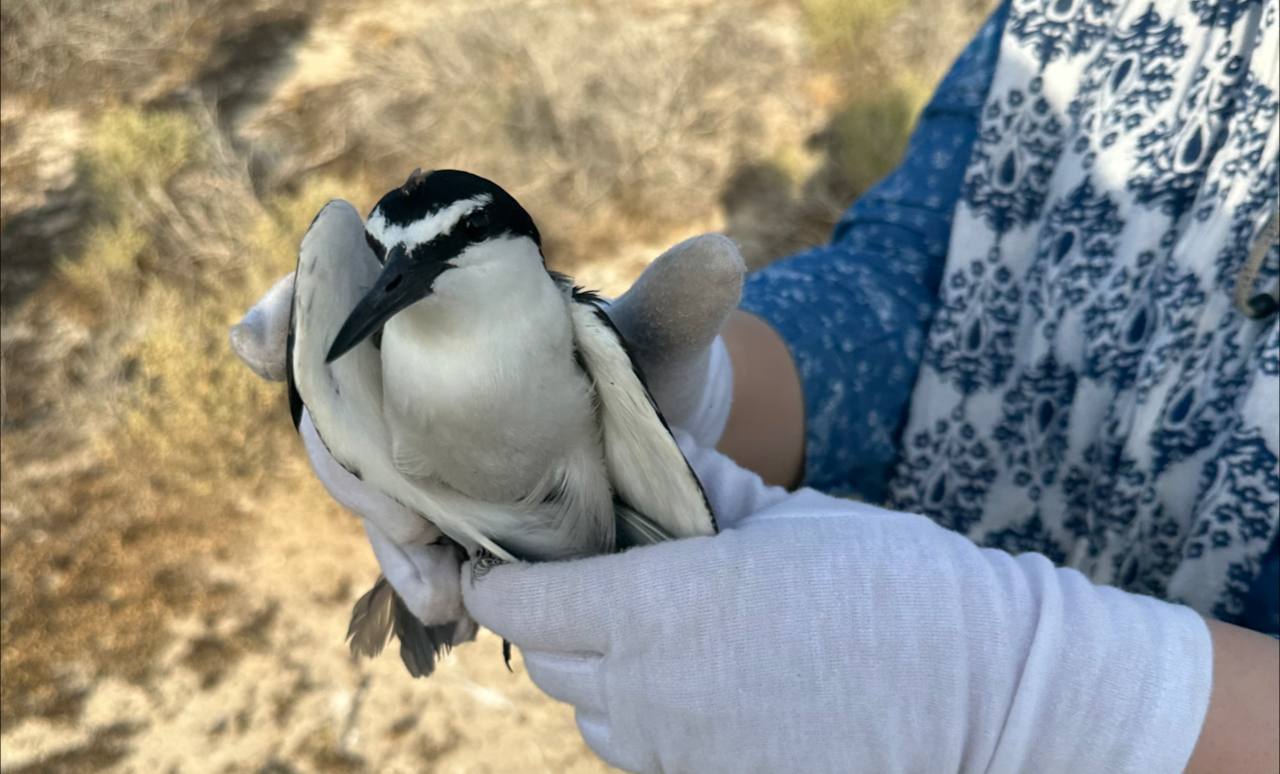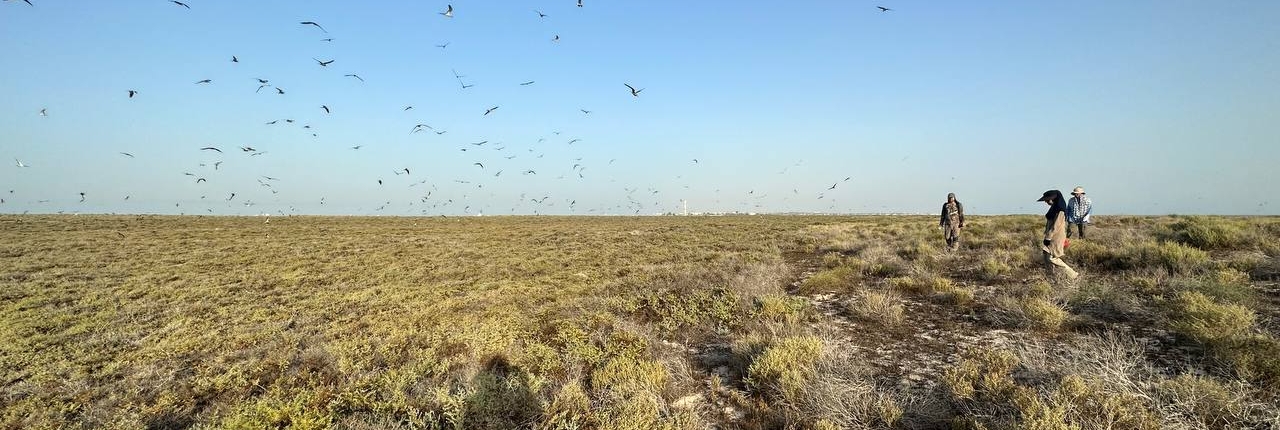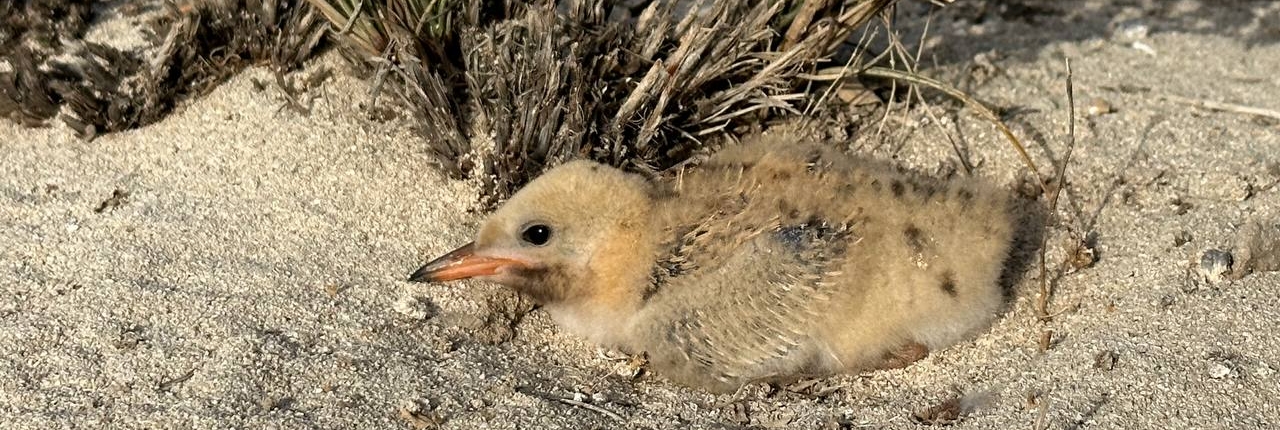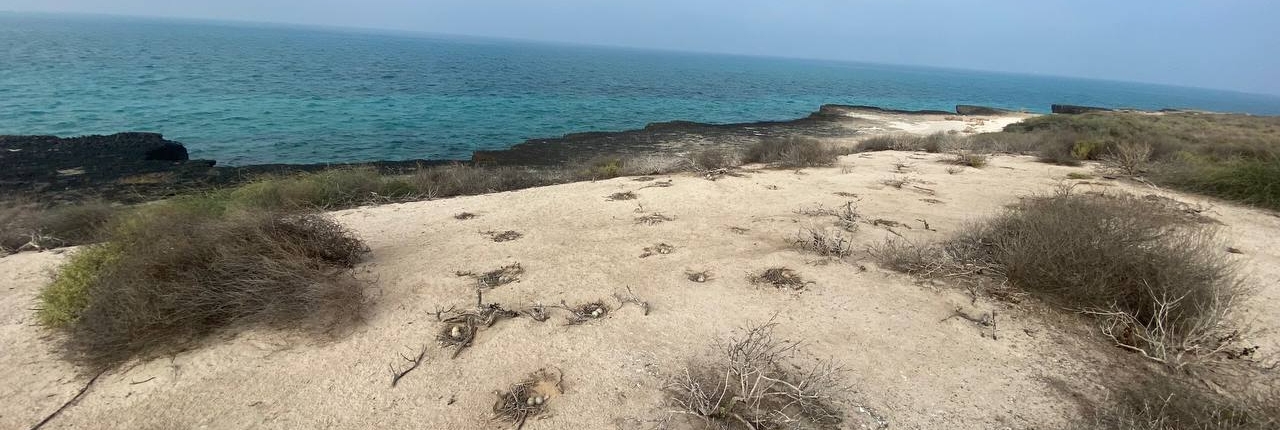Breeding Bird Population Survey and Banding on Shidvar Island
Protecting Critical Breeding Grounds for Terns on Shidvar Island
Small, uninhabited islands around the world serve as safe and suitable breeding grounds for many waterbird and shorebird species. Monitoring and protecting these areas are crucial for ensuring the survival of these species. In Iran, several uninhabited islands in the Persian Gulf have been protected by the Department of Environment for decades.
Shidvar Island, one of these small, uninhabited islands in the Persian Gulf, is particularly important for the breeding of several bird species, especially terns. The Hormozgan Department of Environment regularly monitors this island to assess the breeding status of its bird populations and identify potential threats to their survival.
In 2021 and 2022, the AvayeBoom Bird Conservation Society, financially supported by the Hormozgan Department of Environment, conducted a breeding bird population survey on Shidvar Island. The survey aimed to monitor the breeding status of bird species on the island and identify threats to their survival. The results of these annual surveys are documented and used to inform conservation strategies.
Key Findings
During the 2021-2022 surveys, the breeding of four bird species was observed on Shidvar Island. The populations of three tern species – the Lesser Crested Tern, the White-cheeked Tern, and the Bridled Tern – were specifically monitored. The final population estimate for these terns was 80,966 individuals, underscoring the island’s environmental health and its importance for bird conservation.
The most significant threats to the birds on the island were identified as the presence of tourists who do not follow environmental regulations and the destructive actions of poachers. Additionally, the status of marine life and fishing practices around the island requires further investigation.
Importance of Shidvar Island
Shidvar Island (also known as Maru Island) spans 98 hectares and is one of the uninhabited islands of the Persian Gulf. The island’s relatively flat surface rises to a maximum height of 10 meters above sea level, with no freshwater sources. Aside from a lighthouse, there are no human structures on the island. The large number of breeding birds has earned Shidvar the nickname “Bird Paradise,” attracting the attention of ornithologists worldwide.
Due to its ecological significance, Shidvar has been managed and protected by the Department of Environment since 1975 as a wildlife refuge. Although the island itself covers 98 hectares, its registration under the Ramsar Convention on Wetlands includes an area of 870 hectares, encompassing the surrounding waters. Shidvar is also listed as an Important Bird Area (IBA).
Population Trends and Threats
The 2021 census recorded a decrease of approximately 2% in the populations of the White-cheeked Tern and the Lesser Crested Tern compared to 2020. In 2020, one of the significant threats identified was the presence of domestic cats on the island. This issue was resolved before the 2021 breeding season through collaboration between the Hormozgan Department of Environment and wildlife experts.
The 2021 results indicated the presence of 78,116 Bridled Terns, 28,846 White-cheeked Terns, and 4 Lesser Crested Terns, highlighting the island’s critical role in the breeding of these species. Despite the high breeding numbers, the ongoing threats emphasize the need for enhanced protection measures for Shidvar Island.
Acknowledgments
The AvayeBoom Bird Conservation Society extends its sincere gratitude to the Hormozgan Department of Environment and all the volunteers who participated in the surveys. Their dedication and hard work were instrumental in the successful completion of this project.









